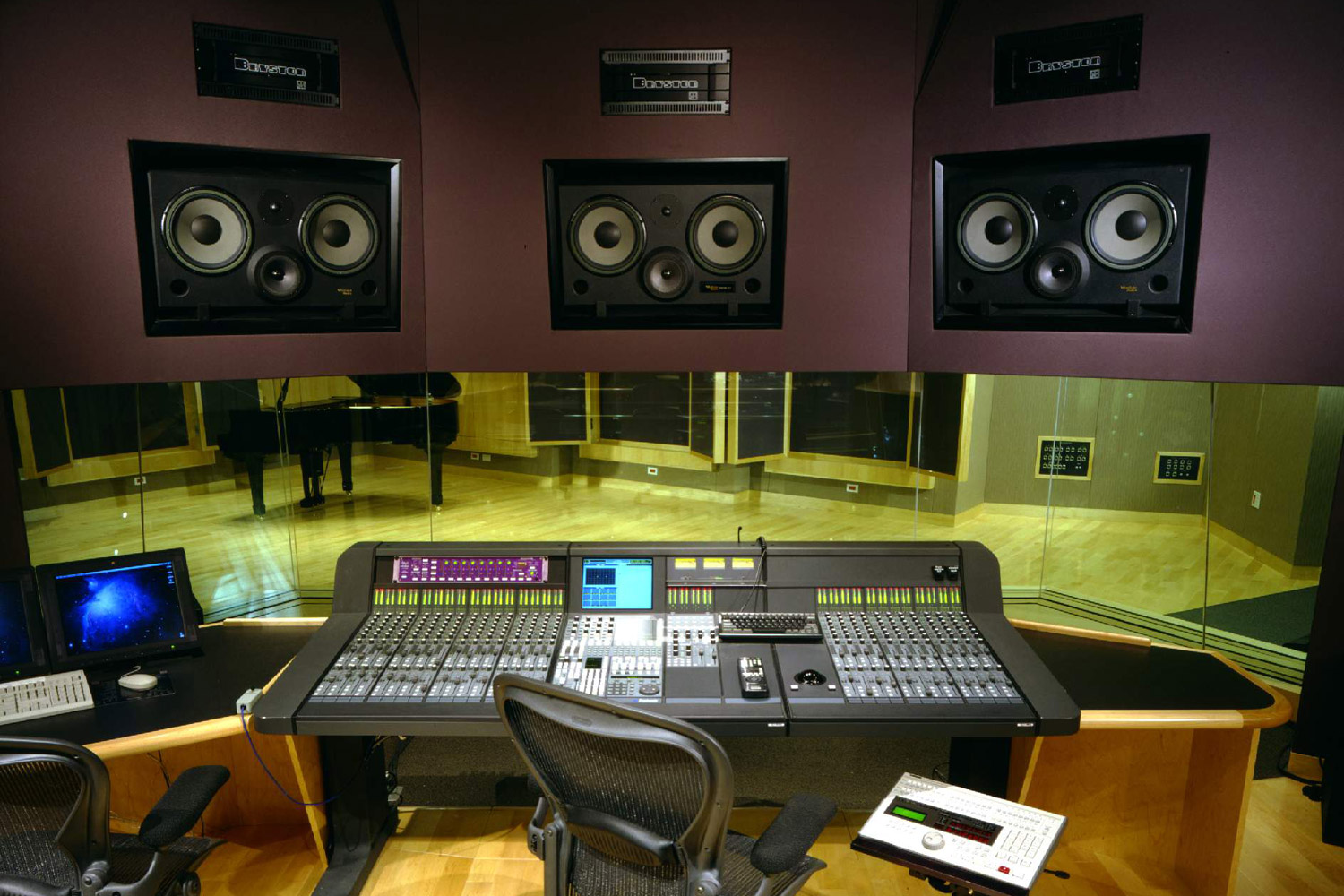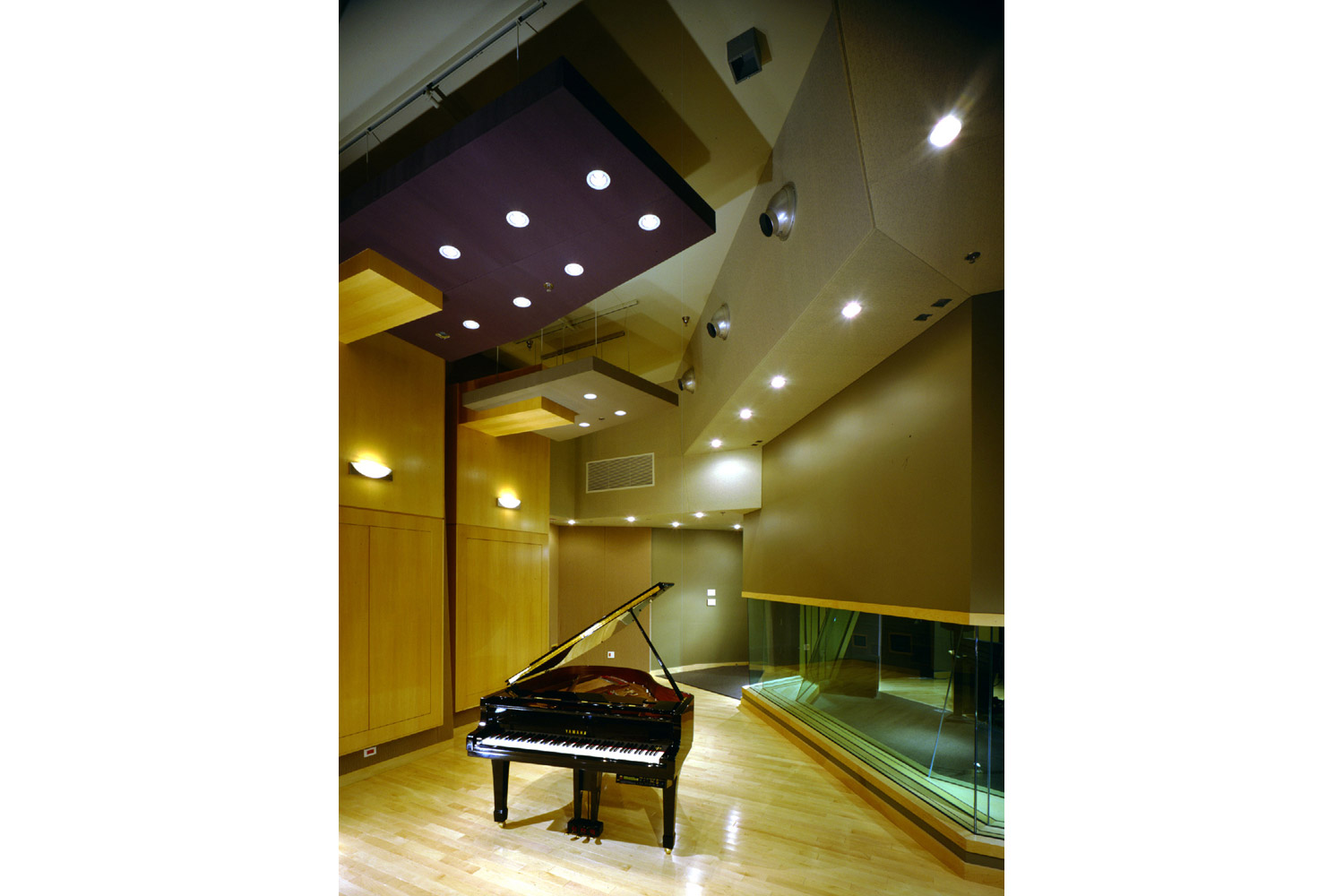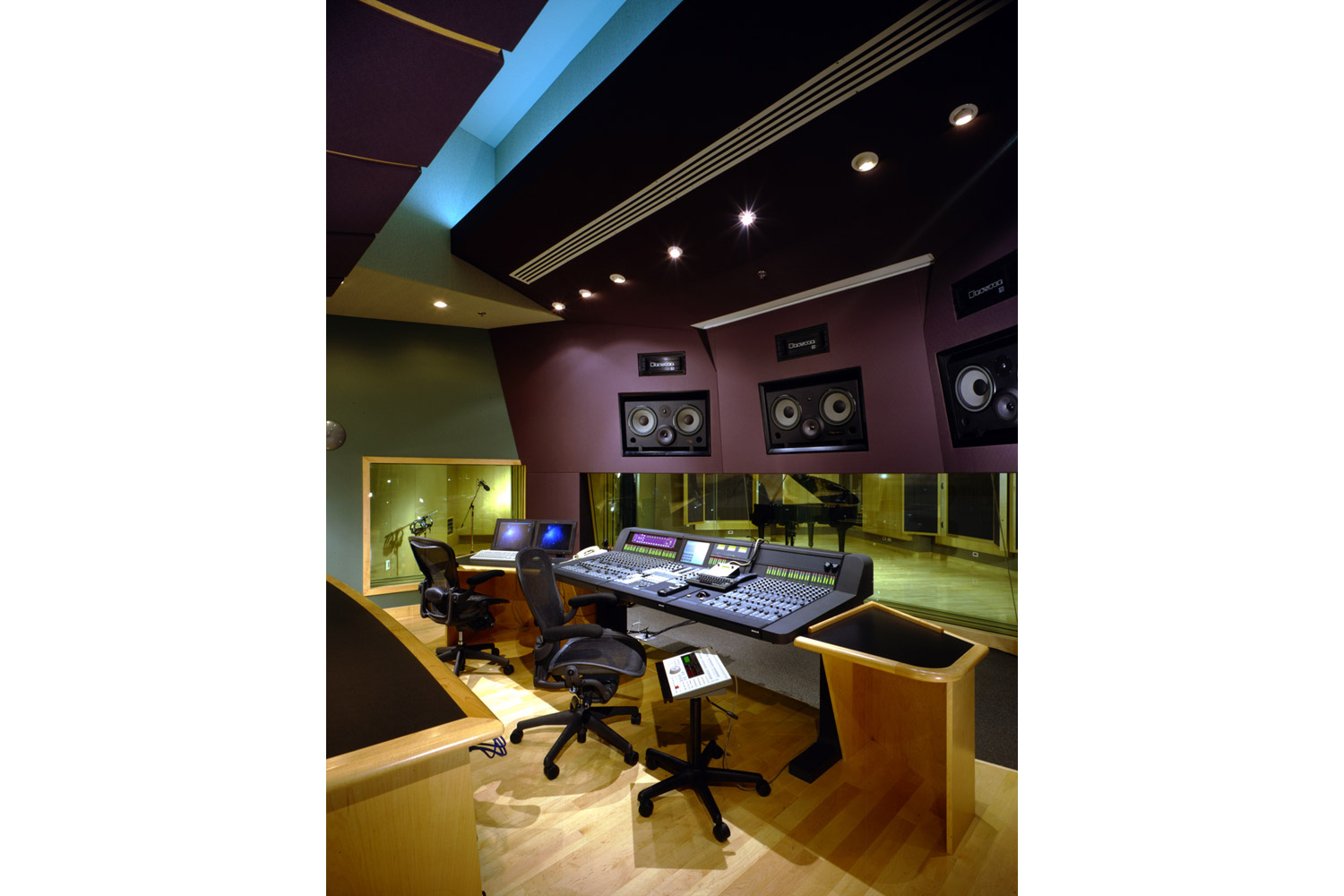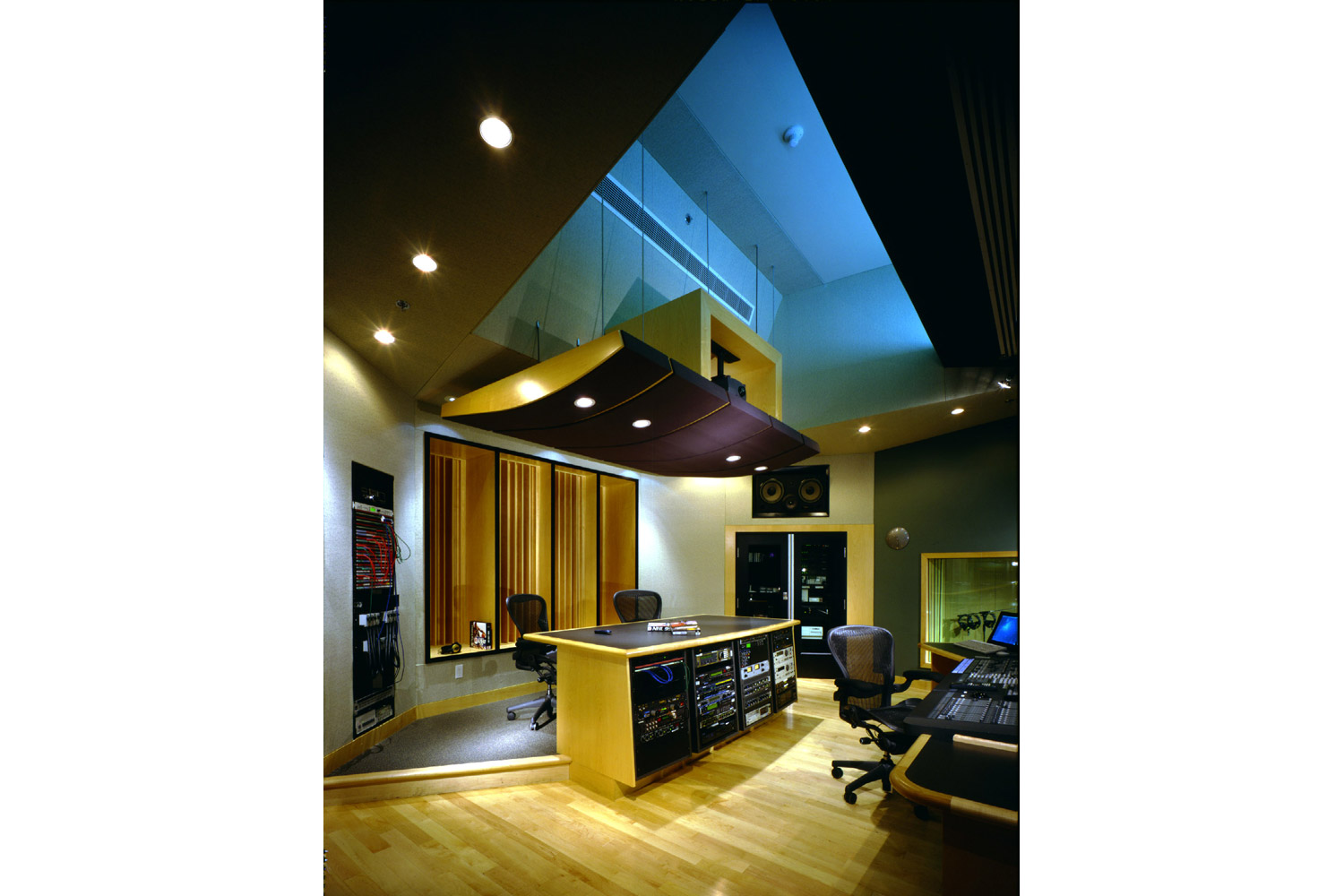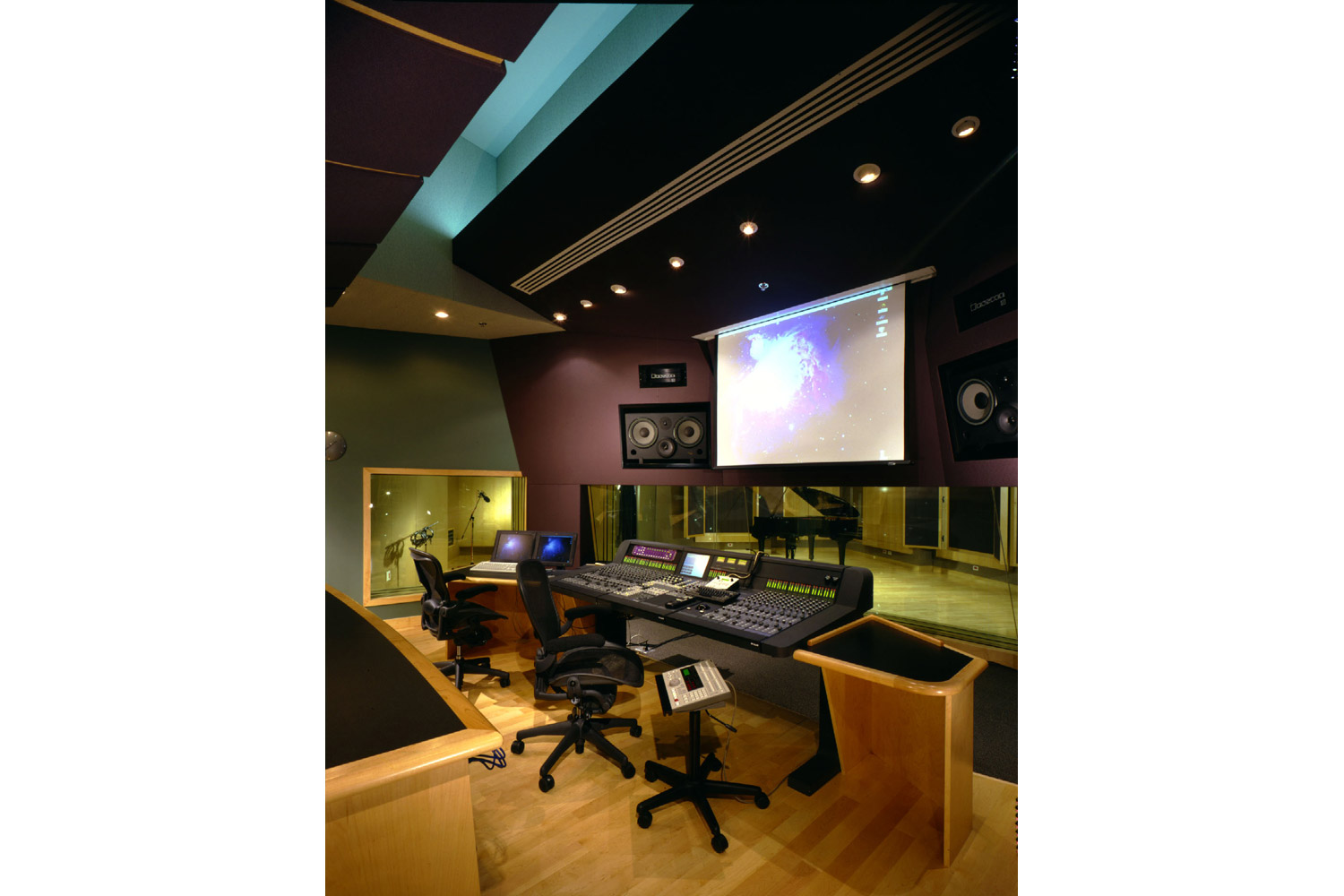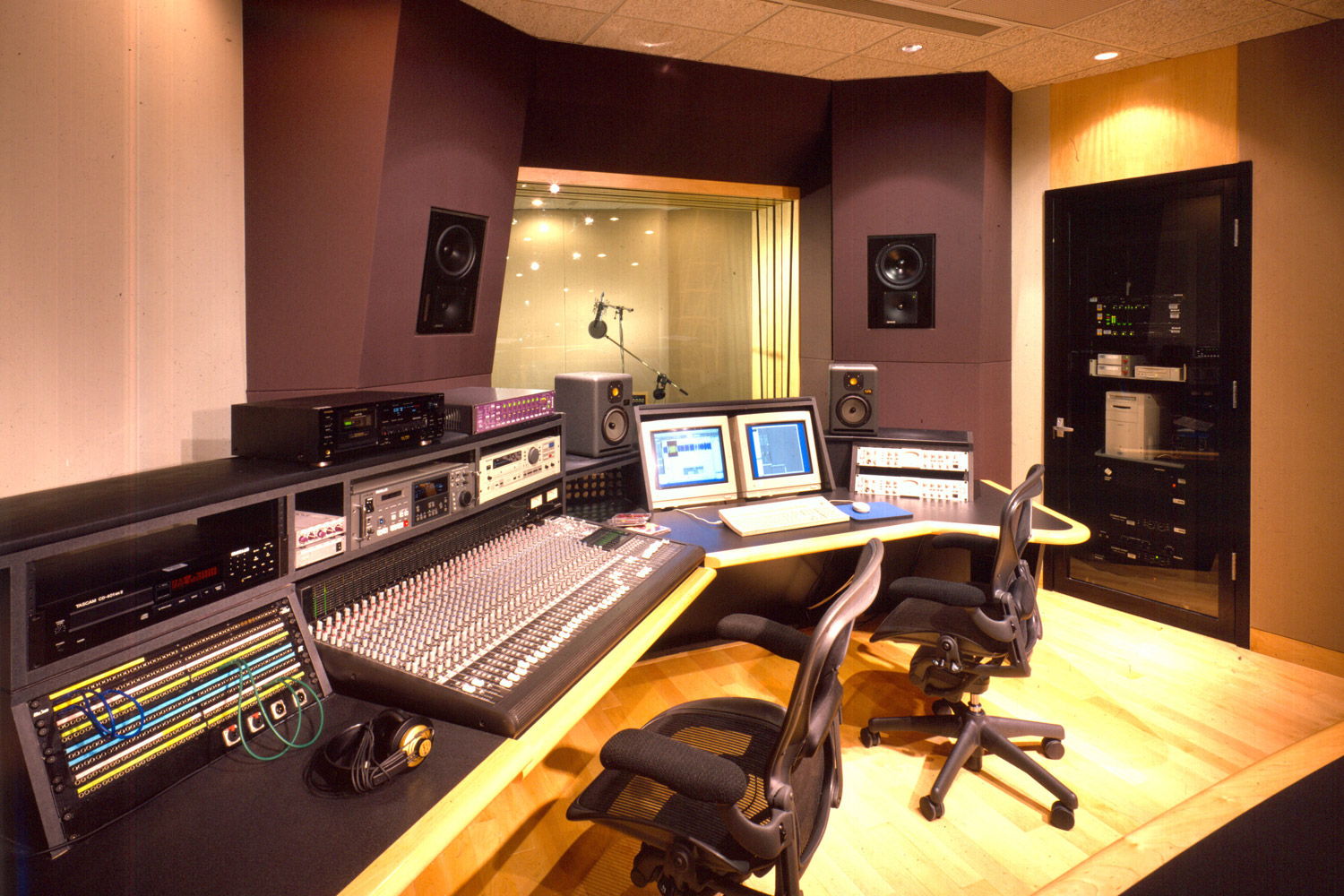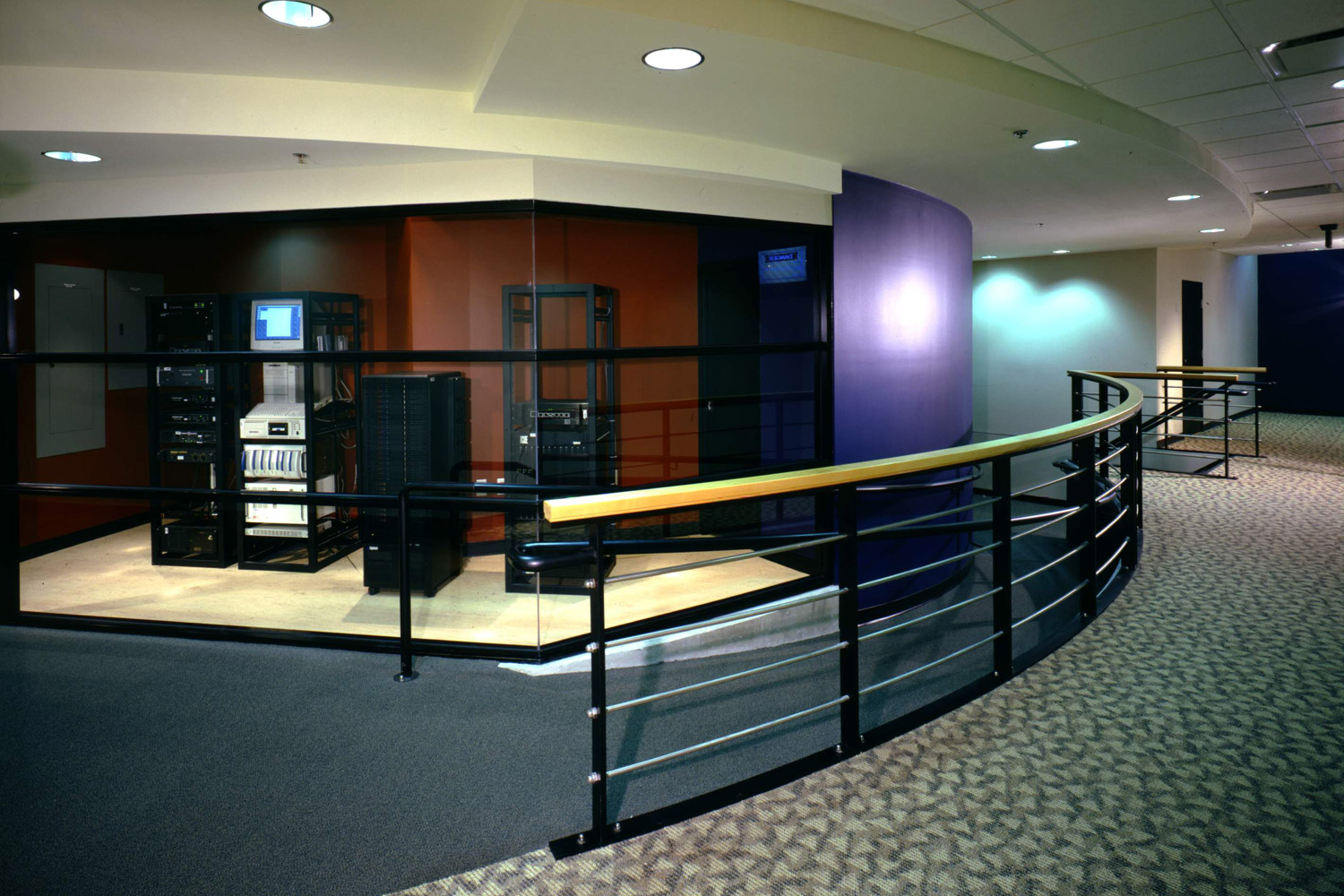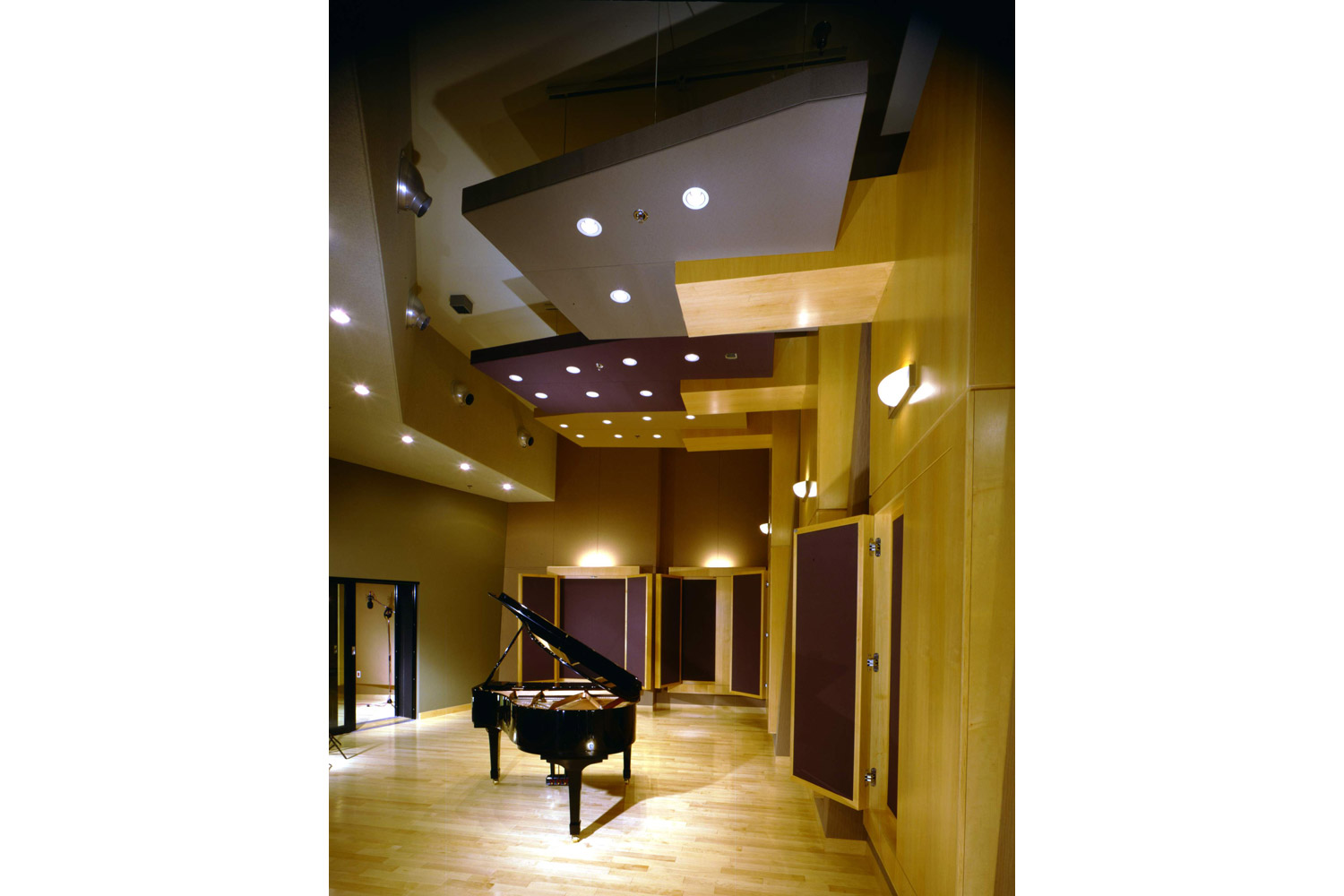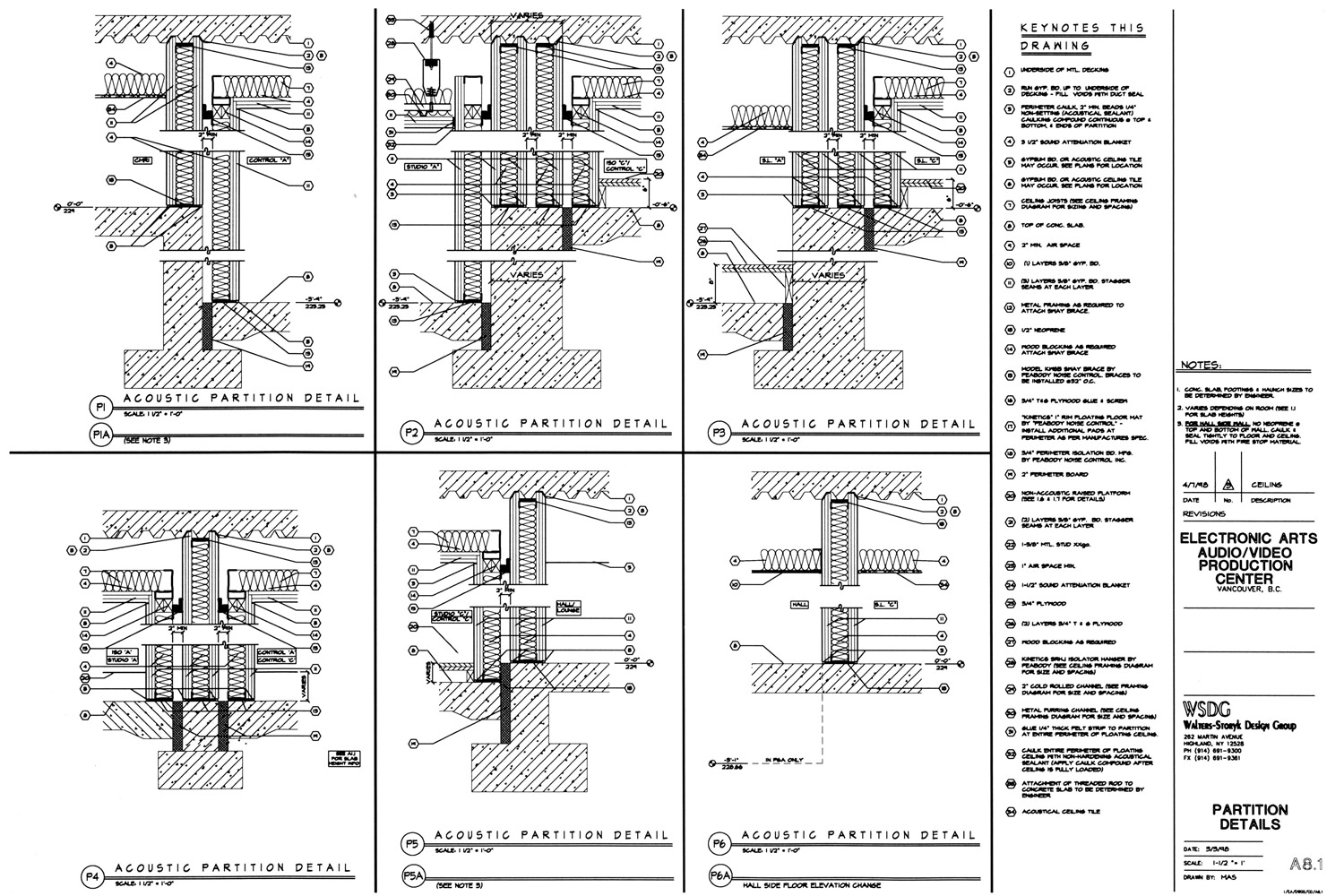Project Description
Overview
Electronic Arts needs no introduction to electronic gaming aficionados all over the world. Its satellite facility, near Vancouver, Canada, is the is the engine behind the startling imagery and soundscapes found in its products, and at the heart of that facility is an audio/video complex that spans 25,000 square feet within Electronic Arts’ massive 210,000 square foot structure.
The building in Vancouver would take over two years to build and would consume no less than 210,000 square feet across five levels—it contained 100% new construction including an advanced networking system that rivaled most local universities. The scale and budget for new operations was massive. Studio A’s 600 square foot control room needed to be built to accommodate multiple uses and clients, even though it would not be “rented out”. Among the most important requirements was that the control room needed to have 100% visibility to all areas.
Design
At this point in time, full 5.1 control rooms were very uncommon. Electronic Arts was far ahead of the industry curve in surround, already mixing and monitoring in 5.1 for its video game soundtracks. For Studio A’s shape, WSDG worked out an orthogonal geometry by first identifying speaker placement. The inner glass wall was tilted much further than required to tame room reflections, but this was required to continue the established plane of the speakers, which needed to be in line with the glass to avoid the SBIR (Speaker Boundary Interference effect). When it came to actual positioning, Storyk placed the speakers as low as possible to avoid console reflections, while still meeting all the modified ITU specs.
WSDG then took the entire control room and rotated it slightly within the grid, providing extra space for the vocal booth and making the shapes of the rooms slightly more interesting. They incorporated a splayed angle on the left side for the booth, mirrored on the opposite side. In the rear of the very deep control room was the producer’s desk, which sat a few feet in front of the large diffuser against the rear wall. The rear ceiling cloud served a dual purpose by taming broadband frequencies and holding the projector, which illuminated the motorized screen in front. The motorized screen is a fairly uncommon element, and is acoustically 90% transparent.
Electronic Arts had one booth in the program off of the main control room, but WSDG was able to provide two by over-sizing the soundlock. The booth provides immediacy and intimacy by allowing sightlines directly into the control room. The main studio was designed to accommodate multiple instrumentalists, and features variable acoustics in which panels can deaden or brighten the room sound depending on the nature of the source.

